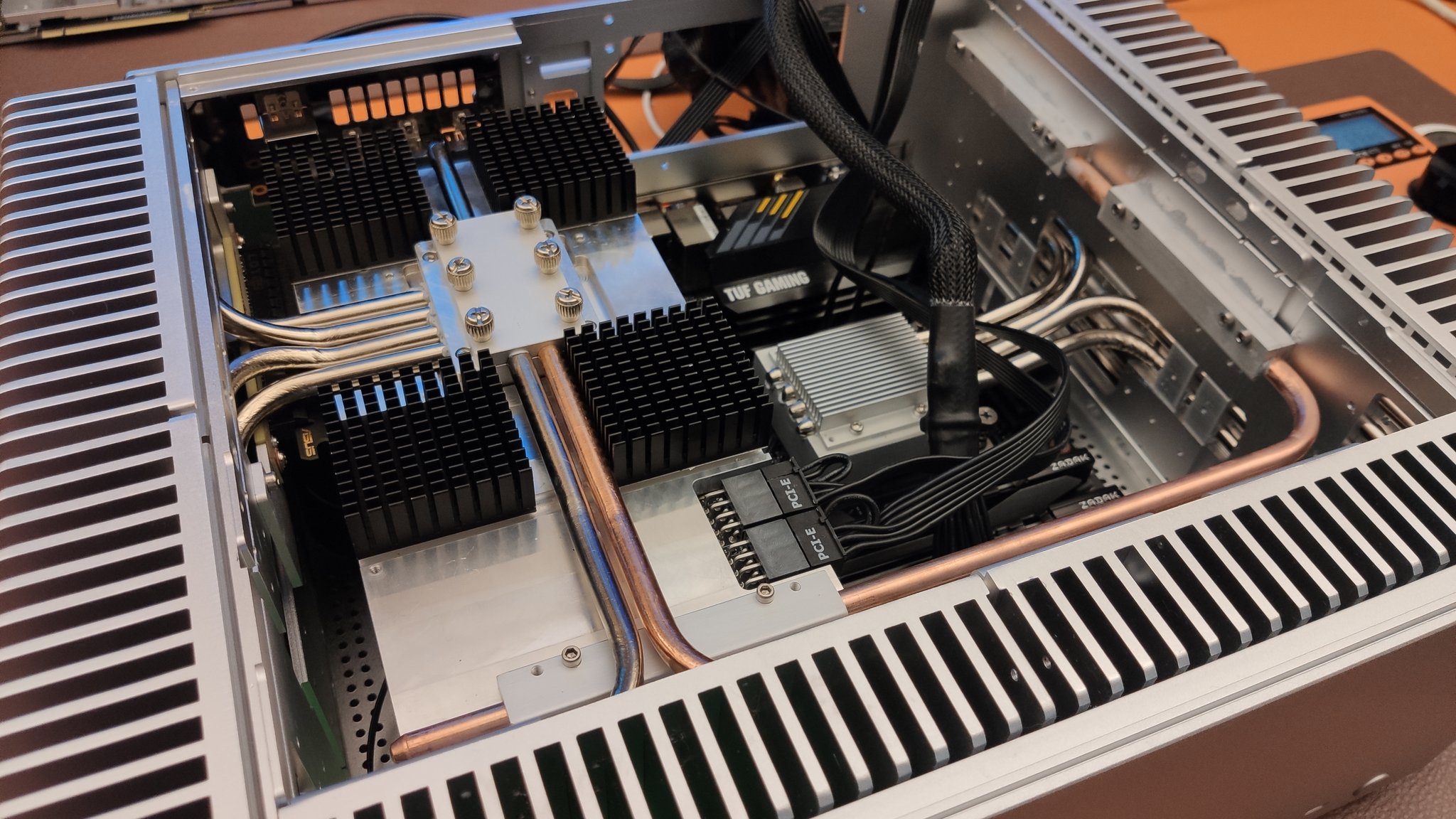The Nvidia RTX 3080 is a beast of a graphics card, able to pump out frames like no tomorrow. But, it’s also a power-hungry card, obviously begging the question: how feasible is it to passively cool? Okay, so that’s definitely not an obvious question to ask, but there have been cases that have made claims of cooling up to an RTX 3080 before — just look into the failed kickstarter of the NSG S0 or the Monsterlabo ‘the Beast.’ Meanwhile, Mical Wong, the founder of Turemetal, had a go at cooling an RTX 3080 fanlessly in his company’s passive cooling case, the Turemetal UP10, as spotted by FanlessTech.
Now, it’s important to mention a few things: this isn’t a cheap endeavor. The RTX 3080 will set you back a solid two grand with today’s prices, and the Turemetal UP10 has a sticker price of almost $800 — there’s a steep price you pay for silence.
Silence Costs More Than Just Money
In setting up the system, Wong dropped the Asus TUF RTX 3080 into a computer that’s also running an AMD Ryzen 5 5600X — a solid CPU choice that runs relatively efficiently without too many cores blasting out heat.
After setting the lot up, Wong ran Furmark to give the GPU some grief and posted the following result
As you can see, the starting temperature of the GPU was just 18 degrees Celsius, and it topped out at about 87 degrees Celsius before Wong ended the test — but the temperature hadn’t levelled out yet. That’s probably a wise call, as the GPU temperature reported is not identical to the peak temperature on the GPU die, but it does show the system’s limitations.
The CPU wasn’t under any significant load during this test, and we must also note that Wong was doing the test in a very chilly room: 13.6 degrees Celsius with about 64% humidity. These are excellent conditions for a passively cooled PC, but less so much for humans especially when gaming.
Wong’s system was drawing about 410 W under this Furmark load.
A Little Tuning Could Help, No?
From what we can see, Wong is attempting to run the RTX 3080 at full blast. Ambitious, perhaps a bit too ambitious.
Much like people optimize GPUs for efficiency when mining to maximize profits, we believe the same concept could be helpful here to find a thermal equilibrium. Dropping the clock rate in Afterburner, dropping the power limit, and perhaps even undervolting the GPU through BIOS modding, as scary as that might be on a GPU, could help further.
We dropped our RTX 3080’s power limit to 70% when optimizing our GPU for Ethereum mining, which should shave about 100 watts off its power consumption. Of course, you’ll sacrifice some performance like this, but if it helps passively cool an RTX 3080 successfully, it’s a price you’ll have to pay to achieve the goal.
